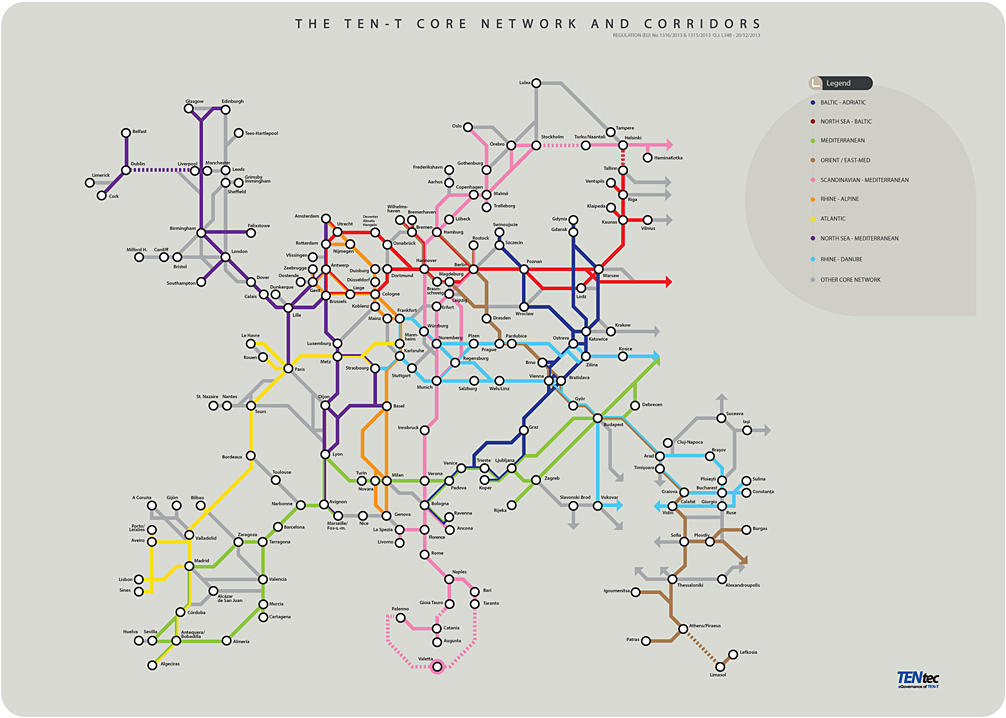 The European Green Deal sets a clear ambition: the EU should become the first climate neutral continent by 2050. To reach this aim, transport needs to reduce its emissions by 90 percent by 2050 compared to 1990. The transport sector is still seeing growing emissions rates; reversing this trend is hence a major challenge. Yet it also comes with new opportunities for jobs, growth and better quality of life, in the end.
The European Green Deal sets a clear ambition: the EU should become the first climate neutral continent by 2050. To reach this aim, transport needs to reduce its emissions by 90 percent by 2050 compared to 1990. The transport sector is still seeing growing emissions rates; reversing this trend is hence a major challenge. Yet it also comes with new opportunities for jobs, growth and better quality of life, in the end.
In order to decarbonise transport, and reduce other pollutant emissions as well, we need to drastically improve effi ciency of the overall transport system, reduce its energy consumption and push for the use of least polluting modes of transport wherever possible. We need to decarbonise transport fuels across all transport modes, coupled with a fleet conversion to low and zero-emission vehicles and vessels.
Technology engineering alone will not be enough. Mobility is part of many aspects of our daily social life - we are mobile, because we go to work, go shopping, visits friend, go on holidays. It is an essential part of our overall social agenda.
The Commission is now working on a comprehensive strategy for sustainable and smart mobility that leaves no one behind. It will support the Commission ambition to increase the level of emission reduction under the 2030 climate and energy targets, as announced by President von der Leyen.
We do not need to start this discussion from scratch. By November 2018, the Commission already adopted a long-term climate strategy proposal. It has been subject to intensive debate by Member States, which have endorsed the objective of climate neutrality. The strategy provides a set of scenarios how to achieve overall climate neutrality and the action required in the transport sector.
We already put in place relevant policies in the context of the Mobility Packages of the last Commission. The CO2 emission performance standards for cars, vans and trucks provide a clear incentive for the deployment of low- and zero-emission vehicles. The new Clean Vehicles Directive will mobilise the power of public procurement to support the deployment of these vehicles, particularly in the bus segment.
Work on completing the trans-European transport networks is continuing. We are making the steps towards real high-speed rail networks across borders in the EU, offering a new and attractive travel alternative for citizens. We will also address the needs of boosting freight transported by rail and inland waterways. The implementation of the European Rail Traffic Management System (ERTMS) is a major milestone to be reached. We are therefore working on a revision of the TEN-T Regulation. We will also work to set further provisions for greening of our ports and airports, including the use of alternative fuels.
Indeed, for aviation and waterborne transport, decarbonisation will primarily pass through energy effi ciency measures and the deployment of alternative fuels, such as sustainable advanced biofuels, e-fuels and bio-LNG. We need to put in place measures to speed up their deployment in these transport modes, and to ensure that limited resources – such as sustainable feedstocks for advanced biofuels and biomethane – are used in the most efficient way.
Vehicle manufacturers are now investing heavily into electrification of their fleet. Many vehicles will come in the market over the next years. Now we need to ensure a suffi cient coverage of alternative fuels infrastructure. Users should be able to recharge their electric vehicles or refuel any other alternative fuels vehicle everywhere in the EU, as easily as they do now for diesel or petrol vehicles. The Green Deal sets the ambitious objective of having 1 million public recharging and refuelling points in place by 2025. We are preparing a revision of the Alternative Fuels Infrastructure Directive.
These actions need to complement our drive towards increasing transport efficiency, particularly in densely populated urban areas. We need a new approach to efficient and seamless mobility, building on collective transport systems and enabling intelligent multi-modal mobility services. A high quality, accessible, comfortable and reliable public transport system is key to reducing car traffic, congestion and related emissions, coupled with action to strongly encourage active modes of mobility such as walking and cycling.
We are now reviewing the Urban Mobility Package and starting to see implementation of the new guidelines for sustainable urban mobility planning by cities all over the EU. We need to rapidly deploy intelligent transport systems and make traffic management much more efficient, and make the steps towards connected, cooperative and automated mobility. This decade will see a lot of change in the way we travel, provided that the right solutions emerge.
We know that financial support will also be needed to help the transition to clean mobility, despite positive market trends. For the new financial term, we have proposed important resources to promote zero-emission mobility in the EU budget making the most efficient use of grants, financial instruments and blending operations. The new Sustainable Europe Investment Plan including the Just Transition Fund is exemplary.
I strongly believe that this evolving legal, political and financial framework will create the right conditions for the decarbonisation of transport. At the end of the day, however, this transition will need the support from each one of us. It is a major challenge, but one we can overcome all together.
